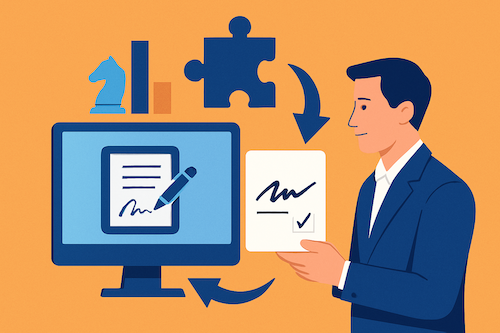
Table of Contents
In today’s fast-paced business environment, optimizing workflows isn’t just a luxury; it’s a fundamental necessity. Many organizations have embraced Digital Transaction Management (DTM) solutions like DocuSign to streamline agreement processes. But is simply adopting the tool enough? Insights distilled from numerous complex system deployments indicate that the true value unlocks when DocuSign is strategically integrated within the broader enterprise technology landscape. This isn’t merely about e-signatures; it’s about creating a cohesive operational flow.
Key Integration Touchpoints for DocuSign
Thinking about where DocuSign fits best? It’s not a one-size-fits-all answer, as its utility spans across various departmental functions. A perspective forged through years of navigating real-world enterprise integrations suggests a few common, high-impact areas.
Customer Relationship Management (CRM) systems are a prime candidate. Integrating DocuSign with your CRM (think Salesforce, HubSpot, or Dynamics 365) allows sales teams to generate, send, and track agreements directly from the platform they use daily. This can drastically reduce manual data entry and accelerate sales cycles. Imagine quotes turning into signed contracts without ever leaving the CRM interface. It’s a powerful shift.
Enterprise Resource Planning (ERP) systems also benefit significantly. For procurement, HR, and finance departments, embedding DocuSign into ERP workflows (like NetSuite, SAP, or Workday) can automate processes for vendor contracts, employee onboarding documents, and financial agreements. The efficiency gains here are substantial, minimizing errors and improving compliance. Longitudinal data and field-tested perspectives highlight that connecting these core systems is crucial.
Strategic Advantages of Deep Integration
Why bother with the complexities of integration? The benefits extend far beyond simple convenience. One of the primary advantages is enhanced operational efficiency. By automating document workflows, organizations can significantly reduce the time spent on manual tasks, allowing employees to focus on more strategic activities. This isn’t just about speed; it’s about smarter work.
Improved data accuracy and compliance is another critical gain. When systems are integrated, data flows automatically between them, reducing the risk of human error associated with manual re-entry. For instance, once a contract is signed in DocuSign, key terms, dates, and stakeholder information can automatically update corresponding records in a CRM or ERP. This ensures data consistency and makes audit trails more robust, which is a cornerstone of good governance.
Furthermore, a well-integrated DocuSign setup can significantly elevate the customer and employee experience. Streamlined processes mean faster turnaround times for customers and less administrative burden for employees. Think about the onboarding process for a new hire, a smooth, digital experience sets a positive tone from day one. Can your current process say the same?
Navigating Potential Integration Hurdles
Of course, integrating systems isn’t always a walk in the park. There are challenges to anticipate. One common hurdle is managing data mapping and synchronization effectively. Ensuring that data fields align correctly between DocuSign and other enterprise applications requires careful planning and testing. Without this, you might end up with data silos or inconsistencies, defeating the purpose of integration.
Security considerations are also paramount. While DocuSign itself offers robust security features, integrating it with other systems introduces new variables. It’s vital to ensure that data remains secure throughout its lifecycle, adhering to industry best practices and regulatory requirements like GDPR or CCPA. This involves careful consideration of API security and access controls. (It’s a detail often overlooked until it’s too late).
Change management is another aspect that organizations sometimes underestimate. Introducing new workflows, even if they are more efficient, requires clear communication, training, and buy-in from users. Resistance to change is natural, so a proactive approach to guide employees through the transition is key for successful adoption.
The Path Forward
Ultimately, integrating DocuSign into your enterprise systems is a strategic move that can yield significant returns. It transforms DocuSign from a standalone tool into an integral part of your digital infrastructure, driving efficiency, improving compliance, and enhancing user experiences. The journey requires careful planning and an understanding of both the technological and human elements involved. The insights from those who’ve navigated these integrations point towards a future where digital transactions are not just faster, but also smarter and more connected.
What are your thoughts on leveraging DocuSign integrations for strategic advantage? I’d be interested to hear your perspectives. Connect with me on LinkedIn.